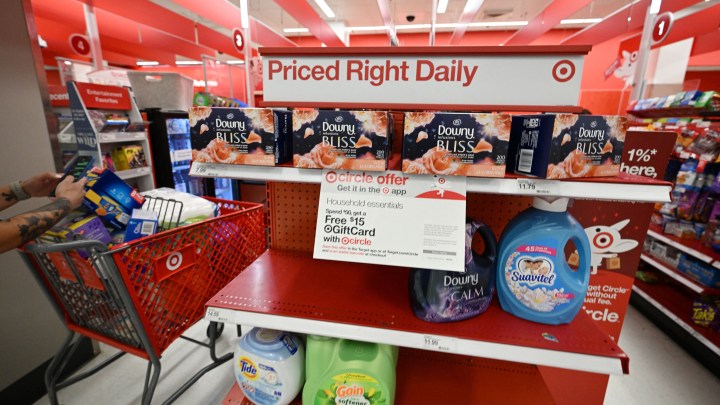
Why retailers messed up their inventories so badly

If you are in the business of retail, 2022 has brought a fresh headache to you: inventory. There is way too much of it — still — on shelves, in warehouses and in storage.
Walmart and Target revealed in recent earnings reports that they have been putting discount signs on their piles of unsold merchandise, trying to get it moving, but those piles are mighty large.
Last year’s fresh hell for retailers was trying to know whether they would get their products on time or at all. Customers wanted more stuff, and supply chains were made dysfunctional by the pandemic.
“Consumers shifted $1 trillion worth of spending from services to goods that retailers had to catch up with,” said Jonathan Gold with the National Retail Federation.
So, a lot of companies started placing orders earlier.
“Where typically it’s six months in advance or so when retailers were placing orders, moving that up to nine months or even 12 months to try and get ahead of some of these other challenges,” Gold said.
Retailers then had to become fortune tellers, predicting what they would need and when they would need it much further in advance than usual.
“It’s hard to know what you’re gonna need because consumer preferences and consumer desire for goods have been swinging all over the place,” said Phil Levy, chief economist at Flexport. “It’s hard to know when it’s gonna arrive because we’ve had a whole bunch of supply chain difficulties.”
A lot of companies got it wrong — very, very wrong. Consumers shifted back toward services, and inflation changed which things consumers wanted to buy.
“A lot of the companies we work with have seen inventories rise by about probably 25% to maybe 30% over the last four months,” said Stephen Bethel, head of Frazier Capital.
Warehouses are filling up and ports are backing up, according to Flexport. So what are retailers to do? Well, a lot of them are gritting their teeth and slashing prices.
“So consumers who are doing back-to-school shopping should expect good bargains,” said Michael Zdinak, director of economics for S&P Global Market Intelligence. “Not just on school supplies, but also on these extra inventories on retailer shelves.”
Will that be enough? No, not at first, Zdinak said.
“Sales have been flat the last couple months, so with the level of inventories that we’re seeing, the problem’s not going away any time soon.”
Some companies may just have to hold on to this stuff or, in some cases, destroy it. Meanwhile, consumers may get some much-needed deals at a time of stifling inflation.
There’s a lot happening in the world. Through it all, Marketplace is here for you.
You rely on Marketplace to break down the world’s events and tell you how it affects you in a fact-based, approachable way. We rely on your financial support to keep making that possible.
Your donation today powers the independent journalism that you rely on. For just $5/month, you can help sustain Marketplace so we can keep reporting on the things that matter to you.











